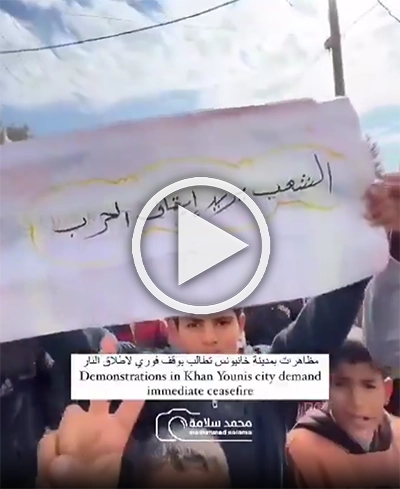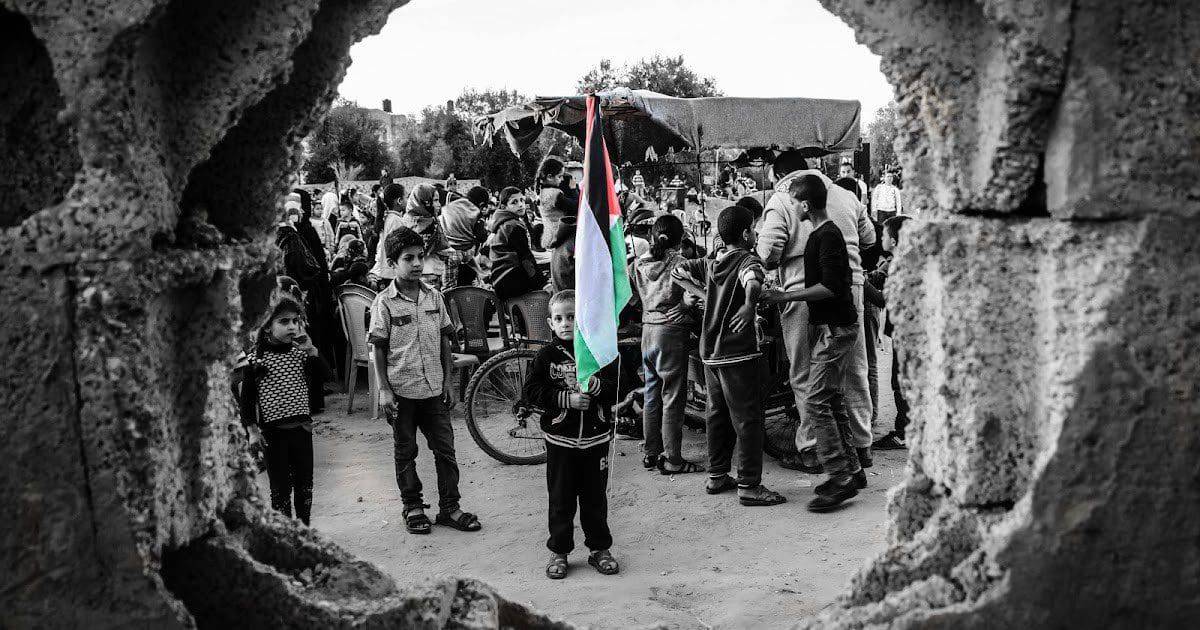Are Palestinians staging anti-Hamas protests throughout the Gaza Strip?
Recently, viral videos have been circulating on social media showing what appear to be spontaneous demonstrations by Gazans in evacuated areas against the war, and perhaps even against Hamas.
The current spate of videos began with a low-quality clip purportedly filmed at night sometime last week, presumably from evacuated neighborhoods in southern Gaza, in which crowds could be heard chanting, “The people want Hamas’s downfall.” However, the low quality, poor visibility and extremely sparse message conveyed by the crowds led some to dismiss them as “fabricated Zionist propaganda.”
Nevertheless, such videos began to appear more frequently and were much harder to refute.

The following video, released five days ago among Gaza factions and distributed by IDF spokesman Avichay Adraee in Arabic, shows a spontaneous demonstration, consisting mostly of children, at an evacuation center in the southern Gaza Strip, where demonstrators chant, “We want to go back to back Beit Lahia, we want to go back to Shati, we want to go back to Jabalya!” All of the areas mentioned are neighborhoods located mostly in the evacuated northern part of the Gaza Strip. Of particular note was the sign erected during this spontaneous demonstration, which read: “Yes to handing over the prisoners,” clearly referring to the 136 Israeli hostages held by Hamas and other terrorist groups in the Gaza Strip. The sign caused quite a stir, with many expressing disdain for the message, and some suggesting that it actually referred to the release of Palestinian prisoners from Israeli jails, ignoring the clear wording of “handing over” rather than “release” the prisoners.
Several commentators tried to dismiss the message, saying it was meaningless and that the event was organized by children who can barely read and write. Others, however, noted that outsiders should not judge those who have not been through what they have been through.
But that wasn’t the only video of the mass rally. Another video soon surfaced showing another spontaneous rally of evacuees marching with white flags and empty water jugs, chanting “We want peace, we want peace! In a Palestinian chat room, when asked who exactly they wanted to make peace with, one participant replied, “These people are suffering so much that they are willing to make peace with Satan to end their suffering. Then came a third video, also promoted by Adraee, showing a gathering of hundreds of Khan Yunis residents heading to the southern humanitarian zone, again apparently shouting, “The people want Hamas to fall!

And then there was a fourth, showing Gazans, including women and children, marching with white flags, shouting “The people want a cease-fire” and “No Netanyahu and Sinwar – enough destruction and war!” Such direct appeals to Hamas’s leader in Gaza, Yahya Sinwar, which could be perceived as open criticism as well as subtle comparisons between him and Israel’s prime minister, are rare and perhaps even dangerous in Hamas’s totalitarian regime.

In fact, such demonstrations are rare, and reports that directly criticize the Hamas government are even rarer due to social taboos, legal measures, and severe restrictions on media coverage. In 2019, for example, a series of mass demonstrations took place in the Gaza Strip under the slogan “Bidna N’eesh” (“We want to live”) in reference to the dire economic situation under Hamas rule, but they were quickly and violently suppressed by Hamas, which also predictably claimed that they were provoked by Israel and accused the participants of collaborating with the enemy. As a result, videos of Palestinians criticizing Hamas or its armed military wing, the Izzadin al-Qassam Brigades, have appeared regularly on social media since the war began.
“We want a cease-fire”
Palestinians have used live, unedited broadcasts to convey their true point of view to the Arab world. In these addresses, an elderly woman admonishes a shocked anchor, accusing Hamas of stealing aid and diverting it underground for its own benefit; a young man shouts: “We want a cease-fire” at a press conference outside a hospital; evacuees march south from their homes in northern Gaza, cursing Hamas and its leaders and seeking God’s vengeance for the disaster Hamas has allegedly brought upon their own people; An elderly wounded man surprising his interviewer by accusing the Al-Qassam Brigades of hiding among civilians; a mother weeping for her son and cursing Hamas – all these moments were captured on camera and can therefore be considered authentic, especially when broadcast on pro-Hamas channels such as Al Jazeera. However, these snippets certainly do not give the full picture.

According to a survey conducted by prominent Palestinian pollster Khalil Shikaki in December, 57% of respondents from the Gaza Strip believed that Hamas was right to unleash the October 7 massacre; however, it should be noted that this data was collected during the temporary ceasefire of that month, and much has changed since then, especially in the southern Gaza Strip. Moreover, it is very rare to find discourse critical of Hamas on Gaza’s social media.
















Leave a Reply